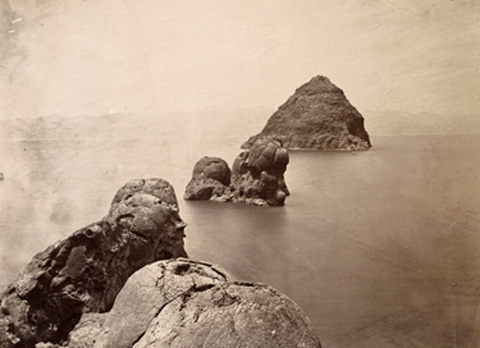After last month's post on Timothy O'Sullivan, I thought it might be fun to make that a pattern, and talk about some of my influences each month.
Eadweard Muybridge didn't immediately become one of my influences. I think in my History of Photography class we mainly discussed his motion studies and experimentation. But I could be wrong; I was in Seattle for half of that semester while I was prepared to donate bone marrow to my brother who was undergoing treatment for Leukemia. It wasn't until about three years after that class that I really began paying attention to his landscape work he did in Yosemite.
Today, Muybridge is most known for his motion studies, which began with him being hired to settle a bet between two men, one of whom was Leland Stanford. The bet was whether a horse, when galloping had all four hooves off the ground, or if an animal that size was always in contact with the ground. Muybridge was hired, and devised a system of 12 cameras set at intervals along a race track, which was all in white. A trip wire was attached to each camera so that when the horse passed in front of it, the shutter was tripped and the exposure was made. This was in the days of wet plate collodion, when exposures were seconds long, so it really is remarkable for Muybridge to have figured out how to reduce the exposure time enough to stop motion the way he did. This led him to perform many more studies of animals and humans in motion. These studies ultimately led to the invention of the motion picture.
Though most known for the motion studies, Muybridge started out his professional photographic career as a landscape and architectural photographer. He photographed San Francisco, and surrounding areas including Yosemite. Some of the scenes he photographed in Yosemite were made from the same point as photographs made by his contemporary and competitor, Carleton Watkins.
For an excellent biography on Muybridge, read Rebecca Solnit's book River of Shadows: Eadweard Muybridge and the Technological Wild West
Or if you don't want to buy a book, you can read this excellent bio over at Imaging-Resource.
Or you can just check out the Wikipedia article on Muybridge.









